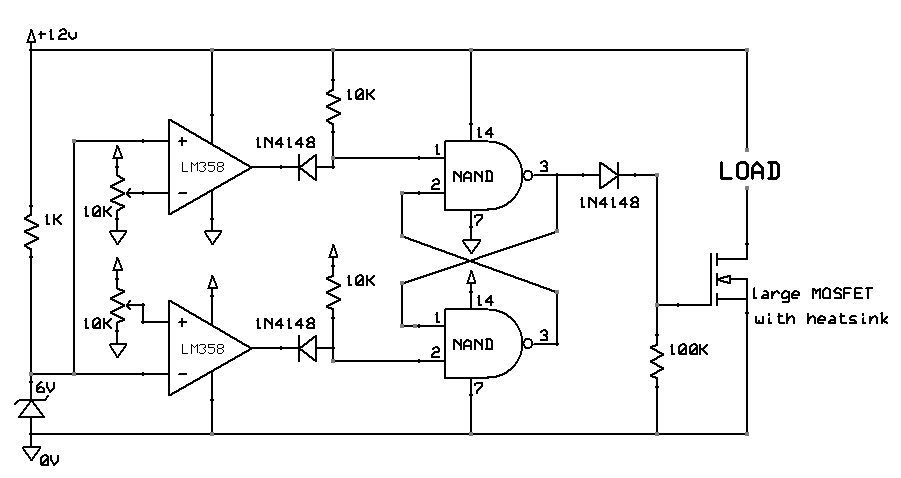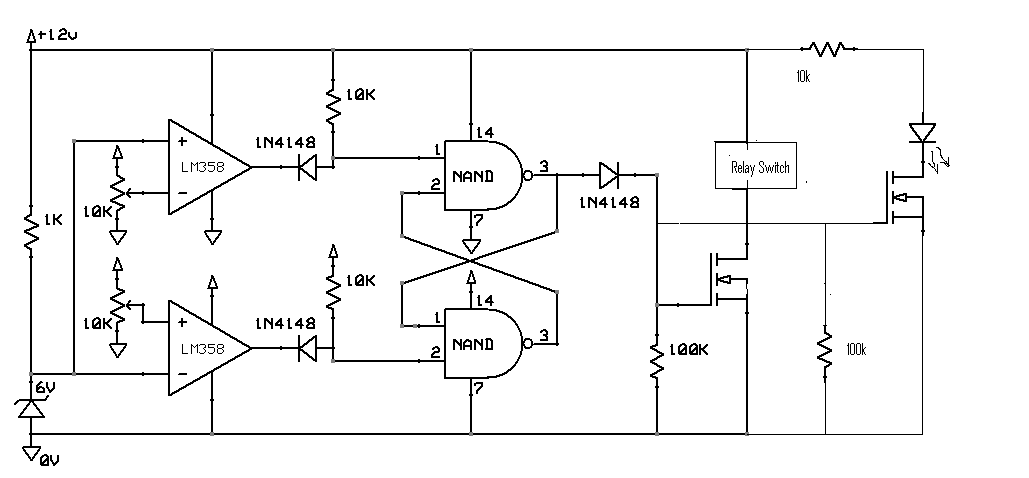| T O P I C R E V I E W |
| kivdenn |
Posted - Feb 08 2010 : 04:50:02 AM
Good day to you all, I got this Low battery Voltage protection circuit from the web and I constructed it and it works very well. In my application it disconnects the load by energizing the relay coil.In other words when the coil is energized the relay switch opens the circuit and the load is disconnected.I wanted to add an LED indicating that the load is off and so I added an extra mosfet, 10k resistor and a 100k resistor and an LED as shown in the attachment but what happens is that the relay works fine but the LED remains on all the time as the voltage varies between 10.5V and 11.5V.
What could be the cause of this? Can it be rectified? Thanks for all your support.
Dennis
Kampala
Download Attachment:  battery_cuttoff_hysterisis2.PNG battery_cuttoff_hysterisis2.PNG
27.2 KB

Download Attachment:  battery_cuttoff_hysterisis with indicator.PNG battery_cuttoff_hysterisis with indicator.PNG
17.34 KB
 |
| 5 L A T E S T R E P L I E S (Newest First) |
| wasssup1990 |
Posted - Feb 09 2010 : 05:59:52 AM
MOSFET's can be ruined instantly without knowing if the gate membrane is damaged by a static discharge. So assuming you havenít overheated it through over-soldering or by exceeding the limits of the device, that could be the problem. If you can keep your components on a grounded plane, do it. This will prevent isolated static potentials building up around your work area and so preventing static discharges to your components when you pick them up. If you don't want to hold on to an earthed computer chassis like I do a grouneded wrist strap will suite you. And don't forget those relay protection diodes.
Also I am assuming you know enough about MOSFETs as to avoid destroying them through poor design practices so I won't bother mentioning other ways in which you can destroy them. |
| kivdenn |
Posted - Feb 09 2010 : 05:20:47 AM
If the mosfet is dead what could have been the cause of its death because there is no big current flowing through it, so that I dont make the same mistake again |
| wasssup1990 |
Posted - Feb 08 2010 : 10:16:39 AM
It's possible 100K is bit high. You should check with a multimeter to see if the Gate voltage changes at all when your relay switches. If it does change from 0V up to (VDD - VFdiode) then your LED mosfet is dead. |
| kivdenn |
Posted - Feb 08 2010 : 10:11:37 AM
The relay has got a protection diode and the gates of both mosfets are connected to the ground through a 100k resitor. Could it be that this resistence is too high ? Thanks
Dennis |
| wasssup1990 |
Posted - Feb 08 2010 : 08:23:35 AM
Hmm maybe check your LED MOSFET because it might be damaged. You don't have a protection diode across the relay coil. Ensure that you have those gate charge sinking resistors connected too otherwise the gates will float since the diode comming from the NAND gates prevents a sinking current of their own to pull the gate charges down to 0V VGS. See how you go. |

